Understanding the onion growth stages is essential for harvesting at peak flavor and quality. From seed to mature bulb, onions follow a fascinating lifecycle influenced by soil, sunlight, and temperature. Initially, onion seeds are sown and germinate, creating small, delicate seedlings. At this stage, onions are primarily focused on root and foliage development. The leafy tops are the first visible signs of growth, capturing sunlight and aiding photosynthesis, while the roots dive deep into the soil to absorb essential nutrients and water.
As onion growth progresses, the plant enters the critical bulbing phase. This phase usually begins as the days lengthen, and the onion responds to changing light by shifting its energy to bulbing. The bottom of the onion plant slowly swells, forming roots that will eventually be harvested. This stage of onion growth is a good indicator that the onion is starting to grow. Each variety has a specific day-length requirement to trigger bulbing, which explains why some onions thrive better in particular climates. Gardeners should closely monitor the growth at this stage to gauge readiness.
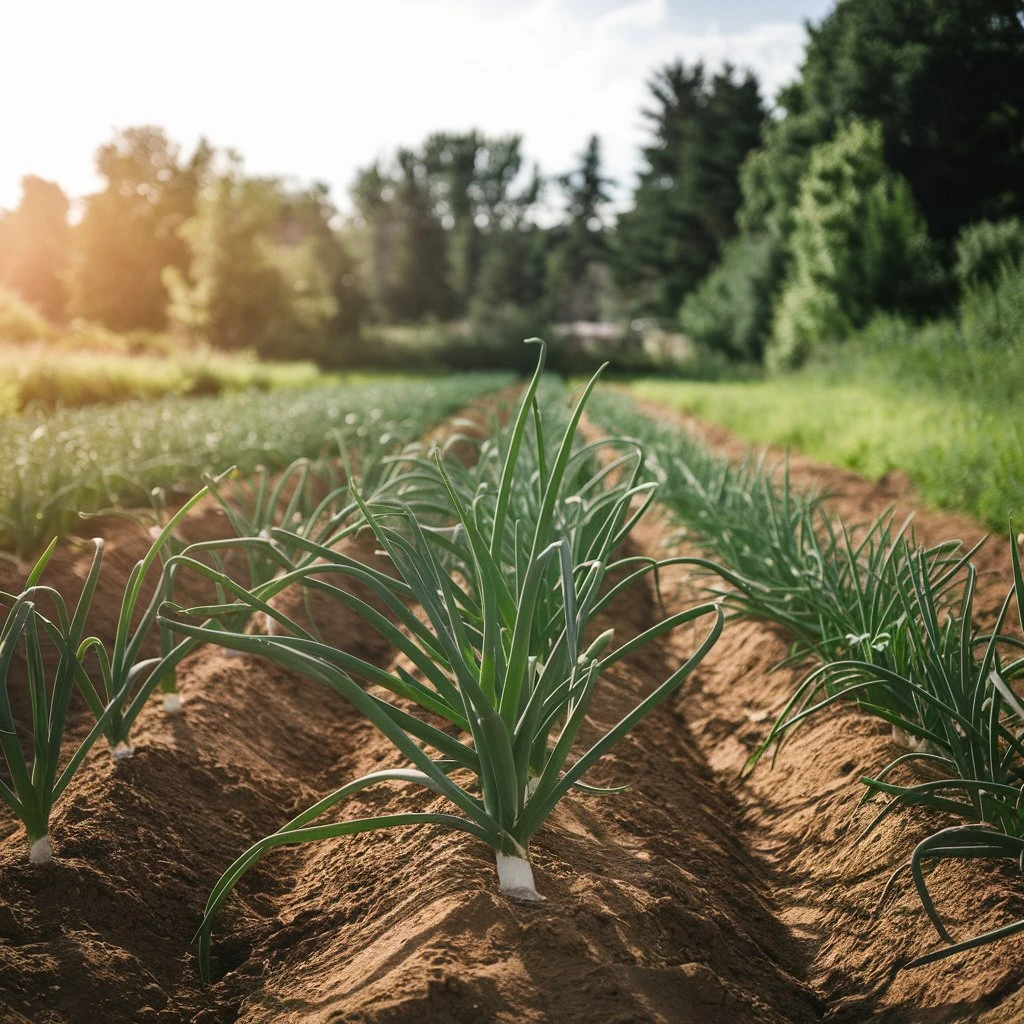
The last stage of growth is characterized naturally by the shrinkage of the top of an onion. Green leaves begin to yellow, wilt, and fall off—a classic sign that onions are not fully ripe. At this point, energy from the leaves transfers to the bulb, enhancing its flavor and complexity. This stage of onion growth determines the best time to prepare for harvest. By understanding these processes, gardeners can anticipate optimal picking times, ensuring onions are of the best quality, storage capacity and flavor.
Identifying Visual Signs of Onion Readiness
Learning the right time to pick onions is key for the best taste, quality, and lifespan. It’s all about spotting small visual cues. Onions tell us they’re ready by changing their leaves, getting rounder, or shifting color. If you keep an eye on these changes while your onions are growing, you’ll know the perfect time to gather them.
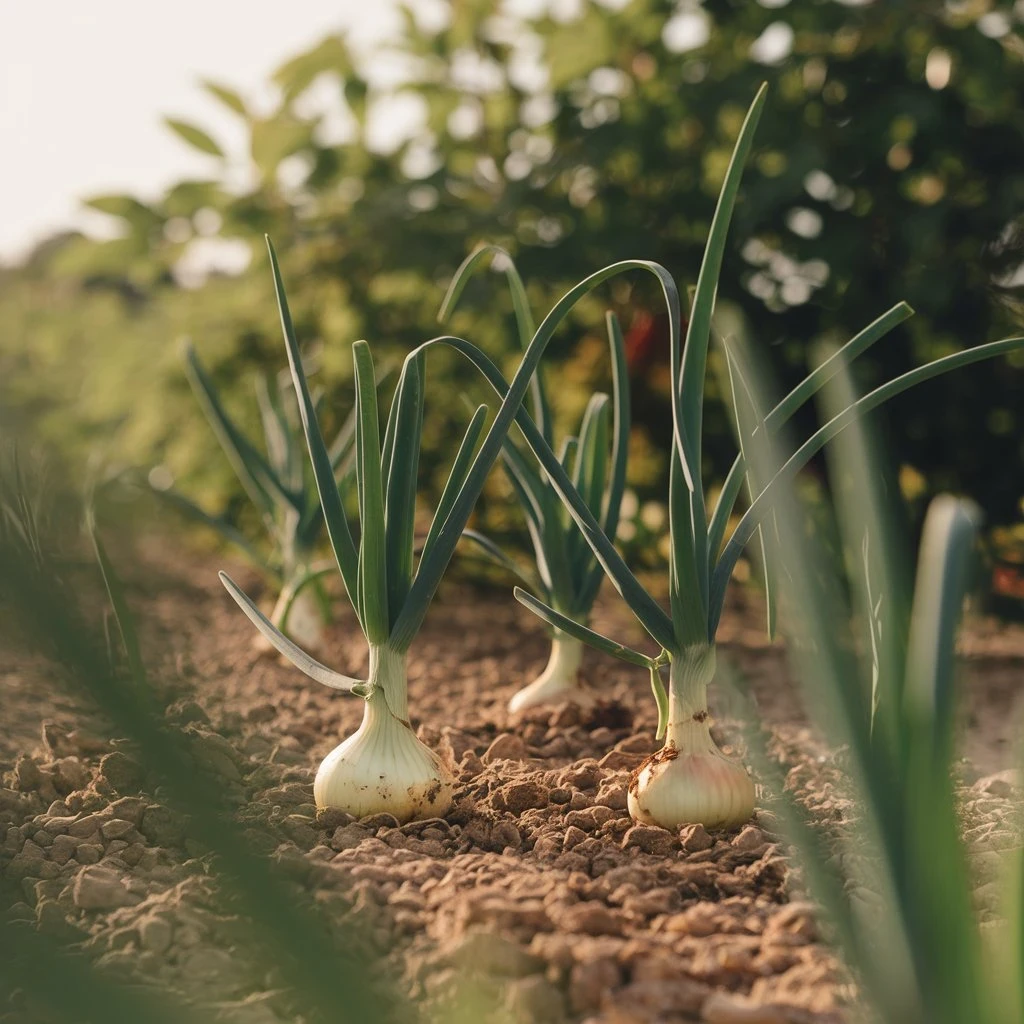
The first clue to the growth journey of an onion is the behavior of the top or leaves. At the beginning of onion growth, the tops are alive and elongated, a sign that the plant is still growing vigorously. But as the onions grow, the leaves begin to tell a different story. When the onions are ripe enough to be picked, their green shoots wilt, turn slightly yellow and go down on their own. This indicates that the bulb is fully mature as the plant begins to focus its energy from producing leaves to developing the bulb itself. When about 80 to 90 percent of the top has fallen, the crop is generally ready for harvest.
Another important observation is the shape of the bulb itself. As onions mature, the bulb shrinks from small to mature and fully flowered. When the onions are ready to be harvested, the buds appear mature, and a dry papery outer layer begins to form. At this point, the skin becomes more opaque, causing the little balls to lose their moisture and shine. This thin layer is important, as it helps protect the bulb and prolongs its storage life. Onion neck—where the hills meet the ball—is soft rather than stiff at the side as well. A soft neck indicates that the plant has completed its growth cycle and is ready to be harvested.
The color of the bulb can be another sign of readiness. Any red, yellow or white onions will develop a rich, vibrant color as they mature. Detecting this color change can help gardeners know when onions are ready to harvest. For example, yellow onions turn deep gold, yellow onions turn more intense red, and white onions turn clear and bright white. The color of the drying leaves indicates that the onion has reached its final stage of growth.
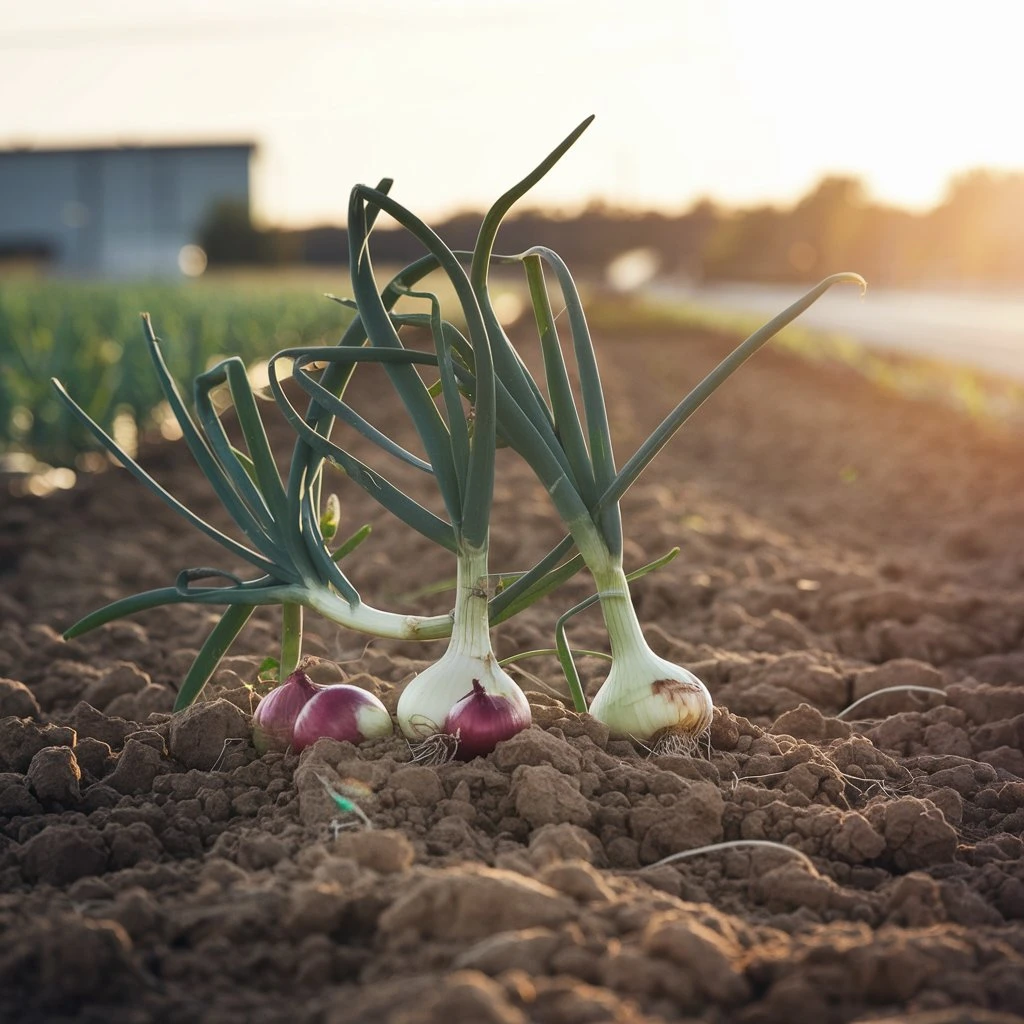
Timing is also key. For those looking to get the most out of their harvest, it’s important to recognize the seasonality of onion growth. Onions are typically planted in early spring and mature in late summer or early fall, depending on the climate and variety. Warm temperatures and long days help to stimulate bulb formation. This seasonality is a factor to consider when determining when onions are ready to harvest.
By understanding and recognizing these visual cues at every stage of onion growth, gardeners can ensure they harvest at the optimal time. Knowing top fall, tuber density, color depth and outer skin appearance helps determine when onions are ready to harvest not only improves flavor and shelf life after harvesting at not only on time, but it makes all the effort in planting and look worthwhile, and produces craftsmanship at its best
Timing Your Harvest: The Role of Climate and Season
Timing the harvest of onions involves a nuanced understanding of climate, seasonal conditions, and onion growth stages. Knowing how to know when onions are ready to harvest means recognizing how each of these factors influences the maturity and quality of the crop. Climate plays a major role, as onions are highly responsive to temperature, day length, and sunlight exposure throughout their development.
In cooler regions, onions may mature more slowly. The onion growth stages are often extended as lower temperatures moderate the pace of bulb formation. Spring-planted onions in these regions may take until late summer to reach full maturity. Observing the onion growth is essential, especially in climates where seasons are shorter. With patience, the bulbs will eventually reach their mature size, though their growth patterns might differ slightly from onions grown in warmer climates. Gardeners should monitor the foliage closely, as the tops turning yellow and bending over indicate the bulbs are nearly ready for harvest. The tops should ideally fall naturally rather than being forced, ensuring the onions have developed fully.
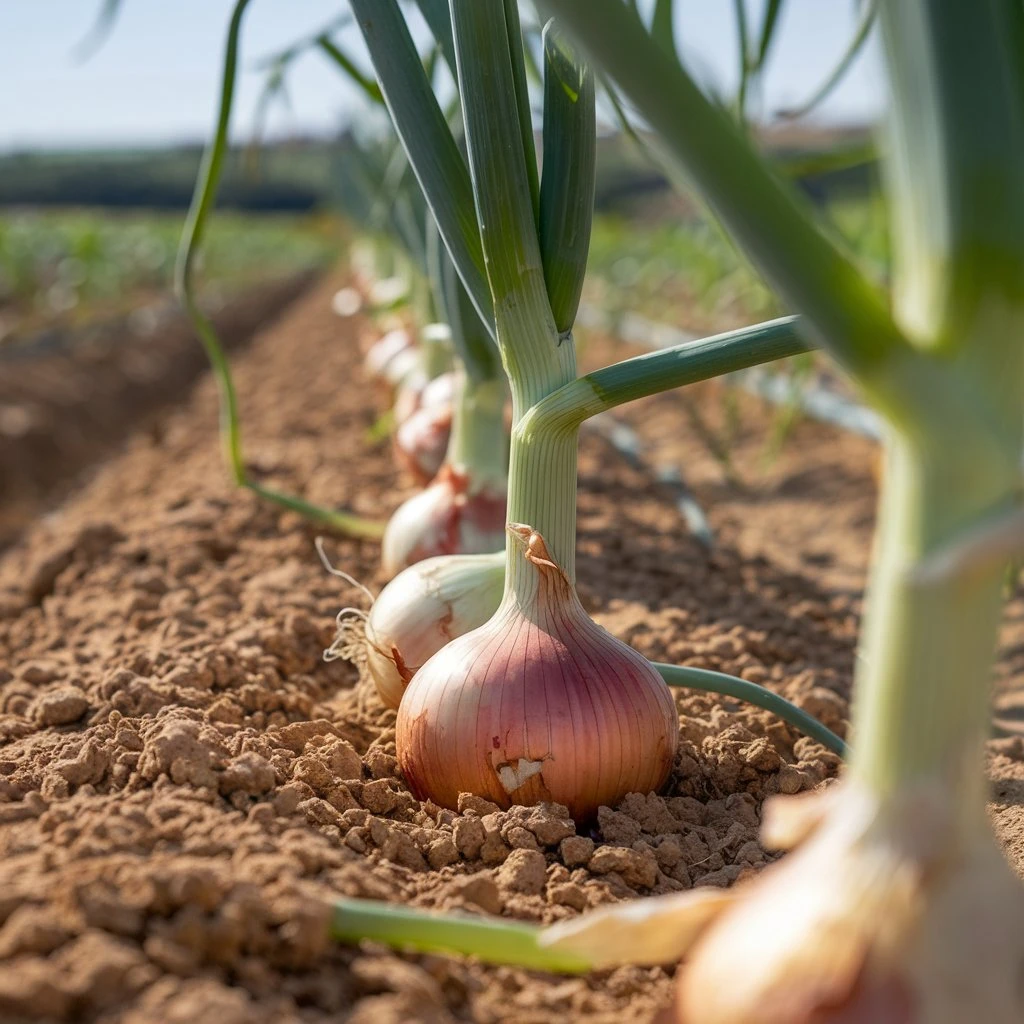
In warmer climates, onions tend to mature faster, often requiring careful management of water and sunlight to avoid premature bolting. When grown in high temperatures, the onion growth stages are accelerated, and the tops may bend over sooner than expected. This could cause uncertainty about when onions are ready to harvest. In these conditions, allowing the soil to dry out slightly near the end of the season can help prolong the bulbs’ maturation, allowing them to develop a thick, protective outer layer for longer storage. Timing the harvest is especially important in warm climates where waiting too long can expose onions to the risk of splitting or sunscald, both of which affect storage potential.
Day length is another important factor. Onions are generally classified as short-day, mid-day, or long-day, and each grow best in sunlight conditions. Long-day trees need 14 to 16 hours of sunlight, which is generally ideal for northern areas, while short-day varieties need 10 to 12 hours of sunlight to help ensure onions are ready to harvest by appropriately in timely by the appropriate variety based selection on their region avoid
Ultimately, timing your onion harvest requires a combination of observing onion growth characteristics and understanding how your local climate influences the plant’s lifecycle. By monitoring the tops’ behavior, adjusting for temperature, and selecting the correct variety for your growing conditions, you’ll develop an instinct for how to know when onions are ready to harvest. This approach ensures a robust, flavorful crop, allowing you to enjoy the fruits of your labor at the peak of their season.
Harvesting Techniques to Maximize Shelf Life and Flavor
Picking onions at the right moment is crucial for keeping them tasty and long-lasting. Recognizing when onions are ripe for harvest begins with watching the onion growth cycles and learning ways to promote longer life. How onions are collected and dealt with right after influences their storage capabilities and flavor richness greatly.
Begin by assessing the onions’ tops. In the final stage of onion growth, the green tops will start to turn yellow and eventually collapse. This is a signal that the bulbs have completed their growth cycle. At this stage, you can stop watering for a week or so to encourage the skins to toughen and prepare for harvest. Knowing when onions are ready to harvest is crucial, as premature harvesting can lead to thin skins, making onions more susceptible to decay.
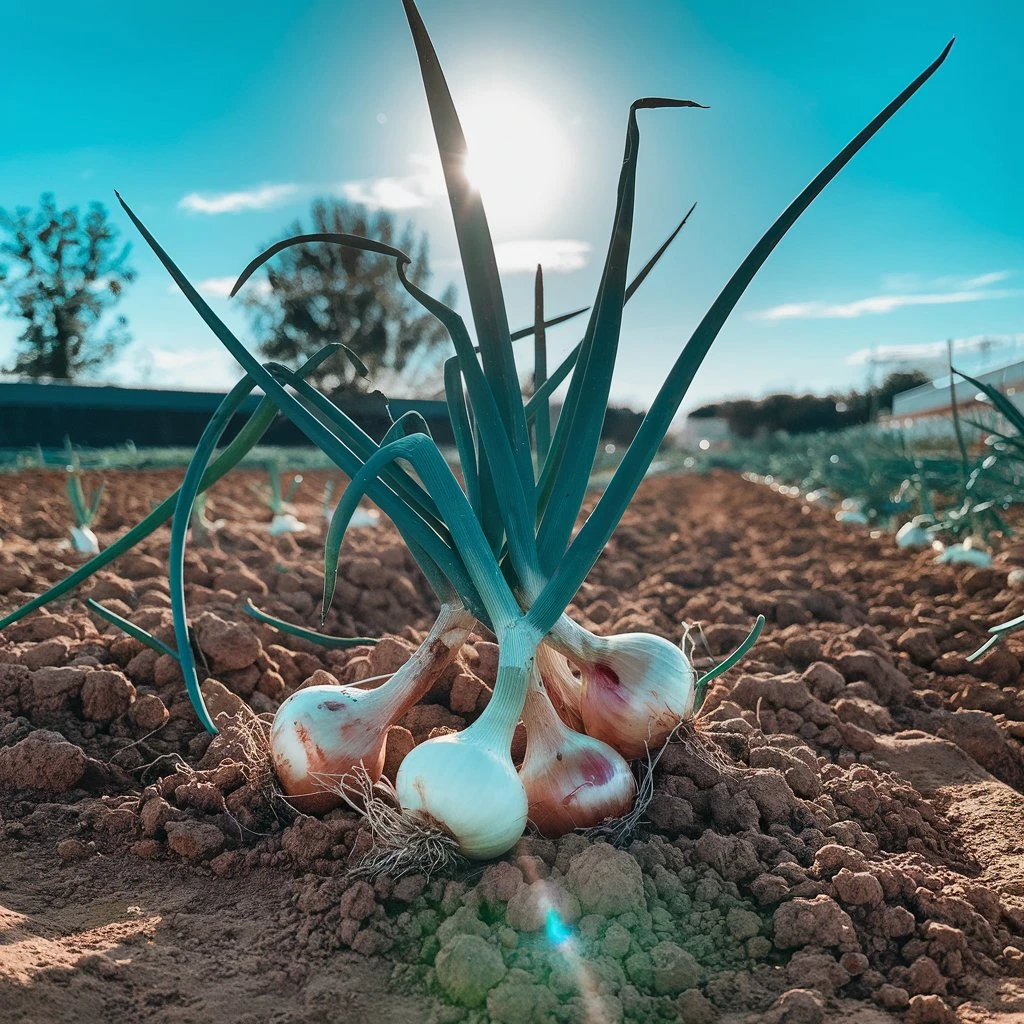
When it comes time to pick up bulbs, choose a warm day, preferably after warm weather. Using a garden fork or hand spatula, carefully loosen the soil around each onion, taking care not to scratch the bulb or scratch the outer skin Gentle handling preserves the structure of the onion, and that in turn helps it last longer. Once soft, pull the onions out with your hands, lifting from the bottom rather than the top to prevent tearing.
Once harvested, the curing process is important to prolong storage and improve flavor. Place the onions in one spot in a warm, well-ventilated area out of direct sunlight, such as a closet or covered porch. This drying phase, which can take up to two weeks, completely dries the outer layer, creating a protective barrier. As onions dry, check for signs of wilting or staining, as these should be used immediately rather than stored.
Once rinsed, lower the dried tops about an inch above the top of the bulb and cut off any remaining stems. Keep onions in a chilly, shadowy, and airy spot. A fabric-lined wooden box or mesh bag does the trick. Ventilation is key to shun water gathering that might cause decay. To ensure your onions last, don’t pile them together since it blocks air movement.
Following these harvesting treatments will allow you to capture the sweet and crisp onions, and they last for months to come These ways gardeners can be confident that they got the best out of each bulb, from growing to storage, when onions are ready to harvest There is, them to get the best they know how to work best
Troubleshooting: Recognizing Overripe and Underripe Onions
When it comes to picking onions, timing matters a lot. It’s like how perfectly cooked or a bit underdone onions can change their taste, feel, and how long they last. Spotting the right time for picking each onion helps. It lets us keep an onion’s taste at its best and extend its shelf life.Determining when onions are ready to harvest usually involves closely monitoring onion growth and addressing a number of problems if there are signs of overripeness or underripeness
Insufficient onions: In the early stages of onion growth, the stems are small, and the green, vibrant tops are still standing tall. Although it may be tempting to pull them at this stage, early harvesting produces small, often sticky onions with thin skins, which are likely to rot Not enough onions are likely a dense, non-spreading bulb with a very green top and dormant. Pulled from the ground too early, onions miss out on a deep, sugary taste that fully grown ones have. If gardeners are curious about when to collect their onions, they can keep an eye out for the tops yellowing and toppling over. This hints at the conclusion of the onion cultivation period.
Overripe onions: Leaving onions on the ground past the optimum harvest time can cause a lot of issues. Overcooked onions often exhibit streaks or stains, indicating that they have begun to fall apart. When onions are overcooked, the skin begins to peel, or the bulb cracks. Onions that are overripe in wet conditions are also more susceptible to mold and pests, which can damage the crop and make it impossible to store. The tops of the overcooked onions are crispy and crunchy, but the stems themselves are a bit soft or squishy.
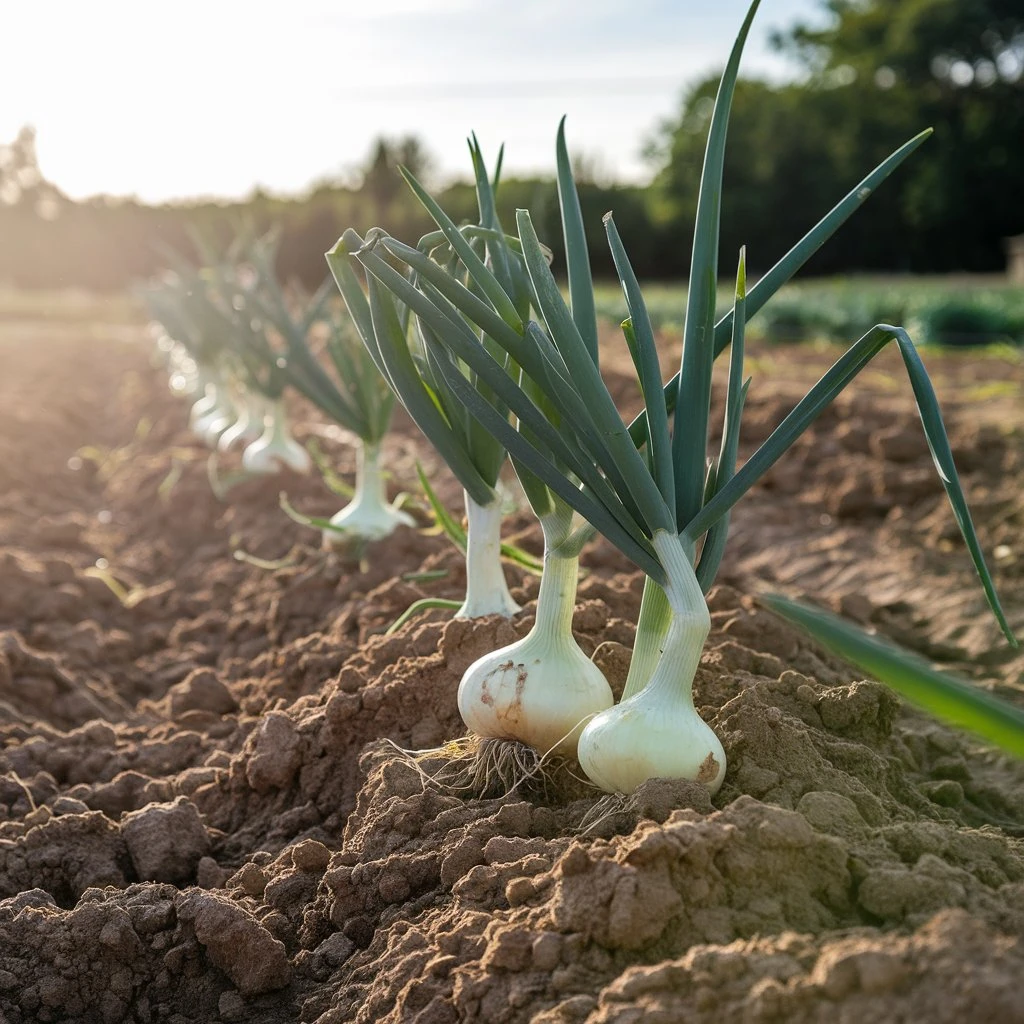
Watch onions closely as they approach maturity to avoid undercooking and overcooking. The best practice for harvesting onions is when about 80% of the top has naturally dropped off, a clear indicator at all stages of onion growth After the tops drop, give the bulbs a week or two let them “cure” the ground, thickening their outer skin and enhancing flavor. This period of light curing provides a natural way to stabilize the onions before they are removed from the soil.
Knowing when onions are ready to harvest is ultimately a balance of observing natural cues and learning from experience. Properly cooked onions have a thick and firm skin, a firm bulb and a fair amount of juiciness. By timing them properly, you can have onions that are tastier, firmer and ready to store for longer, allowing you to get the best out of your produce for months to come.
FAQ
How can you tell it’s time to harvest onions?
Onions are ready to harvest when their tops turn yellow and begin to fall over naturally. This indicates the plant has stopped growing, and the bulbs have reached full maturity. Gently bend the tops over if they haven’t done so on their own to speed up the process.
What’s the typical growth period for onions to mature?
Onions generally take 90 to 120 days from planting to reach full maturity, depending on the variety. Short-day onions mature faster, while long-day onions require a longer growing season. Environmental conditions, like temperature and daylight, can also impact the timeline.
Is it okay to leave onions in the soil after they’re ready?
It’s fine to leave mature onions in the ground for a short period, but prolonged exposure can lead to rot, sprouting, or pest damage. Once the tops have dried, it’s best to harvest them promptly. Monitor the weather, as heavy rain can cause the bulbs to spoil.
When is the right moment to pull onions from the ground?
The ideal time to lift onions is when the tops have completely dried and fallen over. Choose a dry day to minimize the risk of moisture damage. Use a garden fork or your hands to gently loosen the soil and avoid bruising the bulbs.
What are the signs that onions have finished curing?
Cured onions will have dry, papery skins, and their necks will be completely shriveled. The bulbs should feel firm, with no remaining moisture in the outer layers. Properly cured onions are ready for storage and have a longer shelf life.
Is sunlight the best option for curing onions?
While onions can cure in the sun, it’s better to place them in a shaded, well-ventilated area to avoid direct sunlight, which can cause sunscald. Lay them out in a single layer with good air circulation. Proper curing conditions ensure the bulbs dry evenly and develop a protective outer layer.
Check out our latest article for more insights, and follow us on Facebook for updates! and connect with us on Instagram, Pinterest, and YouTube for more inspiration
By Mark


